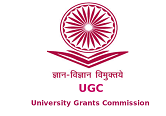Fracture resistance of Endodontically treated teeth restored with Metal and Composite Endocrowns luted with two different luting agents: An in vitro study.
DOI:
https://doi.org/10.55995/j-cpi.2022001Keywords:
Post endodontic restorations; Post & core; Restoration of endodontically treated teethAbstract
Background: Endodontically treated teeth should be properly restored to ensure longevity of the teeth. Many methods to restore ETT are reported in the literature. Endo crowns are a viable method of restoring ETT. There are no reports in the literature related to endo crowns fabricated with metal alloys and lab processed composite resins Aim: The aim of the study is to evaluate in vitro, the fracture resistance of the endodontically treated teeth restored with Endo crowns fabricated using two different materials and luted with two different cements. Material and method: Forty freshly extracted maxillary premolars were used as specimens for this in-vitro study. The specimens were endodontically treated with access opening in a class-I configuration. These specimens were randomly divided into four groups: MG, MR, CG and CR. The specimens were mounted in self-cure acrylic resin and tested for load-to-failure using universal testing machine with cross head speed of 0.5mm/sec. Results: The data obtained were tabulated and statistically analyzed using one way ANOVA and Student ‘t’ test. The fracture pattern and failure modes were classified and analyzed with chi square test. The results of this study showed that the mean fracture load for group-MG is 2816.5N; group-MR is 2709N; group-CG is 679N; group-CR is 642.5N, with very high significant difference between metal and composite material and no significant difference between the luting agents among similar restorative material groups. Regarding the modes of failure, the maximum number of favorable fractures was observed in group-CG, group-CR and catastrophic failure among the metal endocrown groups. Conclusion: Endo crowns fabricated with metal and luted with Glass ionomer cement exhibited superior fracture resistance and hence can be considered as a restorative option for ETT.
Downloads
Published
How to Cite
Issue
Section
License
The entire contents of the Journal of Clinical Prosthodontics and Implantology are protected under Indian and international copyrights. The Journal, however, grants to all users a free, irrevocable, worldwide, perpetual right of access to, and a license to copy, use, distribute, perform and display the work publicly and to make and distribute derivative works in any digital medium for any reasonable non-commercial purpose, subject to proper attribution of authorship and ownership of the rights.






